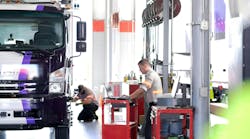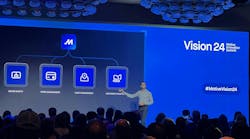Emissions regulations have been a driving force behind diesel engine lubrication since the EPA began regulating diesel exhaust emissions in 1988. EPA regulations for diesel engines have focused primarily on two emissions components—oxides of nitrogen (NOx) and particulate matter (PM).
Emissions standards in the U.S. continue to tighten, and manufacturers are modifying engine designs to comply with changing regulations. All 1999 model-year and rebuilt electronically controlled engines for on-highway service employ retarded diesel fuel injection timing in both urban transient and steady state operating cycles. Retarded timing helps meet the emissions challenge by lowering NOx emissions, but loads increased levels of soot into the crankcase, placing higher demands on the engine oil. Oils that don’t control soot well can cause valve bridge and overhead system wear, filter plugging, bearing failure, loss of fuel economy and reduced engine life.
To further reduce the level of NOx emitted into the atmosphere, in 2002 most heavy-duty diesel engines will be equipped with cooled exhaust gas recirculation (EGR) aftertreatment systems. EGR systems allow more advanced fuel-injection timing for better fuel economy, but they also introduce corrosive acids into the cylinder. Engine oils performing in EGR-equipped engines must handle the increased levels of soot and neutralize the acids to prevent corrosive wear of the cylinder components, including liners, rings and bearings.
In 2002 the industry will see emissions levels cut in half and the API CI-4 specification implemented to ensure engine oil meets the new performance requirements of EGR-equipped engines, as well as non-EGR and pre-2002 models. Looking beyond API CI-4 to the emissions requirements of 2005/2007, PC-10 (Proposed Category 10) will address engine design requirements in an era when EGR and retarded timing are expected to be replaced by exhaust treatment catalysts and ultralow-sulfur diesel fuel.
Chevron maintains formal alliance relationships with leading diesel engine manufacturers with the mutual goal of reduced product development cycle time for future generation engine and lubrication technology. These manufacturers feel that by working with Chevron they can be sure customers will have engine oils that meet the requirements of future emissions changes, and that these oils will be conveniently available when the new engines are introduced. This is a great example of industry leaders working together to benefit their mutual customers, while complying with evolving EPA diesel emissions regulation.


